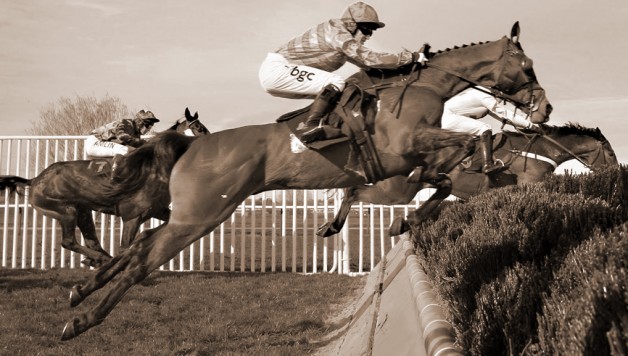Spread Betting on: Horse Racing
What is Horse Racing Spread Betting?
Horse racing spread betting is betting on horse races against a spread instead of fixed odds. Markets include Race Index, Favourite Index, Racing Post Favourites, Double Card Index, Winning Distances, Jockey Index and Matched Bets.
Spread Betting Markets – Horse Racing
- Race Index
- Favourites Index
- Racing Post Favourites
- Double Card Index
- Winning Distances
- Jockey Index
- Match Bets
RACE INDEX
In a horse race we might quote every horse on a 50/25/10 index.
The winner gets 50 points, 2nd gets 25 points, 3rd gets 10 points and 4th or worse get 0 points.
Eg:
Cheltenham 3.30
50/25/10 Index
Hurricane Fly 23-26
Spirit Son 16-19
Zarkandar 14-17
Binocular 10-13
Oscars Well 8-11
Pittoni 4-6
If you thought Binocular would do well you would bet high or “buy” Binocular at 13 for your chosen stake, say €5 a point.
If Binocular won you would win (50-13) x €5 = Win €185
If Binocular came 2nd you would win (25-13) x €5 = Win €60
If Binocular came 3rd you would lose (13-10) x €5 = Lose €15
If Binocular finished 4th or worse or didn’t finish you would lose (13-0) x €5 = Lose €65
FAVOURITES INDEX
Star Spreads will predict the performance of the favourites in each race at a particular meeting. Points are awarded for finishing in the first three in the following way: 25 points for win, 10 points for second and 5 points for third. If there are joint or co-favourites, the lowest racecard number will be deemed favourite.
Eg: Lingfield (8 races)
Spread: 64-68
· Market Result: Race 1 = first (25), 2 = third (5), 3 = unplaced (0), 4 = second (10), 5 = first (25), 6 = first (25), 7 = unplaced (0), 8 = second (10) = 100
· Profit = 32 x stake if bought / loss = 36 x stake if sold
RACING POST FAVOURITES INDEX
Exactly the same as the ‘Favourites Index’, except judged on favourites according to the forecasted SPs in that day’s Racing Post.
Eg: Lingfield (8 races)
Spread: 64-68
· Market Result: Race 1 = first (25), 2 = third (5), 3 = unplaced (0), 4 = second (10), 5 = first (25), 6 = first (25), 7 = unplaced (0), 8 = second (10) = 100
· Profit = 32 x stake if bought / loss = 36 x stake if sold
DOUBLE CARD INDEX
All of the winners’ racecard numbers are added together and multiplied by two to create a prediction for the Double Card Index.
Eg: Haydock (7 races)
Spread: 82-84
· Market Result: Race 1 = 12, 2 = 2, 3 = 16, 4 = 7, 5 = 1, 6 = 5, 7 = 8 = 102
· Profit = 18 x stake if bought / loss = 20 x stake if sold
WINNING DISTANCES
The combined total of winning margins between first and second in all races at a meeting. Points are awarded at 1 point per length and races with margins of less than half a length are settled as follows: nose = 0.05 lengths, short-head = 0.1, head = 0.2 and neck = 0.3. The maximum winning distance is 12 lengths (flat) and 30 lengths (jumps).
Eg: Pontefract (7 races)
Spread: 12.5-14
· Market Result: 2, 1.5, 0.1, 4, 3.5, 10, 5 = 26.1
· Profit = 12.1 x stake if bought / loss = 13.6 x stake if sold
JOCKEY INDEX
A prediction on the individual performance of a jockey at a meeting. 25 points are awarded for a win, 10 points for second and 5 points for third.
Eg: Ascot – Richard Hughes (5 rides)
Spread: 38-41
· Market Result: Race 1 = unplaced (0), Race 2 = unplaced (0), Race 3 = third (5), Race 4 = unplaced (0), Race 5 = second (10) = 15
· Profit = 23 x stake if sold / loss = 26 x stake if bought
MATCH BETS
The distance between two specific horses when they cross the finishing line. The maximum winning distance is 12 lengths (flat) and 15 lengths (jumps) and if both horses fail to finish the bet will be void. It can have also have a negative result meaning greater wins and losses.
Eg: Kauto Star / Denman – Cheltenham Gold Cup
Spread: Kauto Star/Denman 1-2
· Market Result: Kauto Star finishes 5 lengths in front of Denman
· Profit = 3 x stake if bought / loss = 4 x stake if sold

